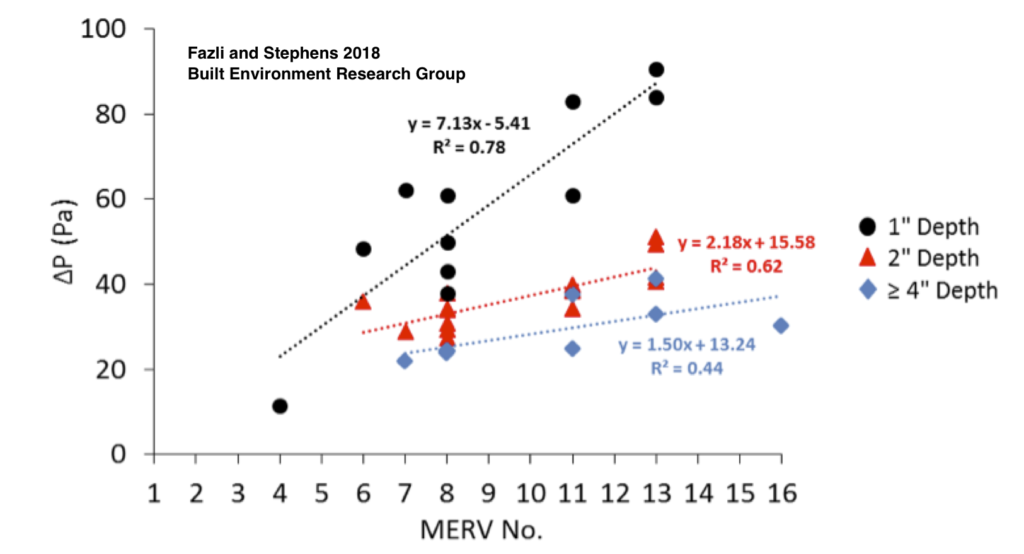BERG provides comments on proposed 2019 California Title 24 residential air filtration requirements
By Brent Stephens on March 14, 2018
California’s Title 24 of the CA Code of Regulations — also known as the California Energy Code or part 6 of the CA Building Standards Code — is one of the most (if not the most) aggressive codes in the country in terms of advancing energy efficiency in buildings. It was created in 1978 by the CA Building Standards Commission in response to a legislative mandate to reduce CA’s energy consumption. It undergoes periodic revision and has continued to strength its efficiency standards over time, setting the pace for the rest of the country.
Most items in the code deal explicitly with energy efficiency, but in recent years more language has been adopted to promote better indoor environmental quality. We were recently asked to provide our opinion on some new proposed language regarding air filtration for the upcoming (2019) rulemaking process. Since this is an in which we are active, BERG PhD student Torkan Fazli and I decided to provide a brief opinion.
Among the changes proposed to Title 24 in 2019 is language to increase the level of air filtration required for new residential construction, from MERV 6 to MERV 13, with the stated goal of reducing indoor PM2.5 concentrations. This is quite a bold move in a relatively slow-to-change industry. To accommodate the higher efficiency filter requirements, the proposed changes would also require that return grilles be able to accommodate at least a 2-inch deep filter to ensure that MERV 13 filters can be installed with minimal impact on HVAC system performance. You can read more about the justification for the proposed changes at the Title 24 residential indoor air quality and ventilation stakeholders site.
This is an area that I’ve done a lot of work in, starting with my master’s thesis work under Dr. Jeff Siegel then at the University of Texas (here and here), and more recently at Illinois Tech working with several graduate students (e.g. here, here, and here). Even more recently, we’ve been conducting measurements of filter pressure drop, air handler flow rates (in a nominal 1000 CFM air handler with a PSC blower), and in-situ filtration efficiency for fine and ultrafine particles for a large number of commercially available filters with various manufacturer-reported ratings (e.g., MERV = minimum efficiency reporting value, FPR = filter performance rating, and MPR = micro-particle performance rating) and various depths (e.g., 1-inch, 2-inch, 4-inch, and 5-inch). You can read about some of this initial testing here. We’ve now tested about 50 filters, 36 of which have had a MERV rating reported by the manufacturer. We plan to publish this work in the near future, but until then, we provided some our data on pressure drop and MERV to help justify the proposed Title 24 changes. The figure below shows filter pressure drop measurements made with each of these 36 filters plotted against the manufacturer-reported MERV rating for each filter. Note that all pressure drops are measured with new (clean) filters.
From this work, our previous work, and the work of several others referenced throughout the publications linked above, I think we can generally conclude the following about higher efficiency residential filters:
- PM2.5 is probably the most important indoor pollutant to control to mitigate long-term (chronic) adverse health outcomes associated with indoor pollutant exposure
- Only MERV 13 filters and above are explicitly required to have a single pass removal efficiency of at least 50% for particles smaller than 1 µm (according to ASHRAE Standard 52.2)
- Targeting removal of particles 0.3-1 µm generally increases PM2.5 removal efficiency, more so than targeting removal of 1-3 µm or 3-10 µm particles
- Therefore, MERV 13 makes sense from a public health perspective
- MERV 13 filters can have high pressure drops, particularly in the narrower 1-inch depth variety
- The energy consequences of high filter pressure drops are probably smaller than most people think, but they can still cause increased fan energy consumption in residential systems with ECM fan motors that increase fan power to maintain the same airflow rate and can cause longer system runtimes (and thus higher energy consumption) in residential systems with PSC fan motors that respond to increased pressure drop by reducing air handler flow rates and thus capacity
- Thicker depth filters — including at minimum 2-inch filters — tend to have lower pressure drops than 1-inch filters within a given MERV category
- Therefore, if one is to move to MERV 13, one should strive to accommodate deeper bed filters that should have fewer pressure drop issues
For these reasons, we generally support the move to require MERV 13 and minimum 2-inch depth filters. You can read our full statement here, as recorded in the California Energy Commission docket log.

